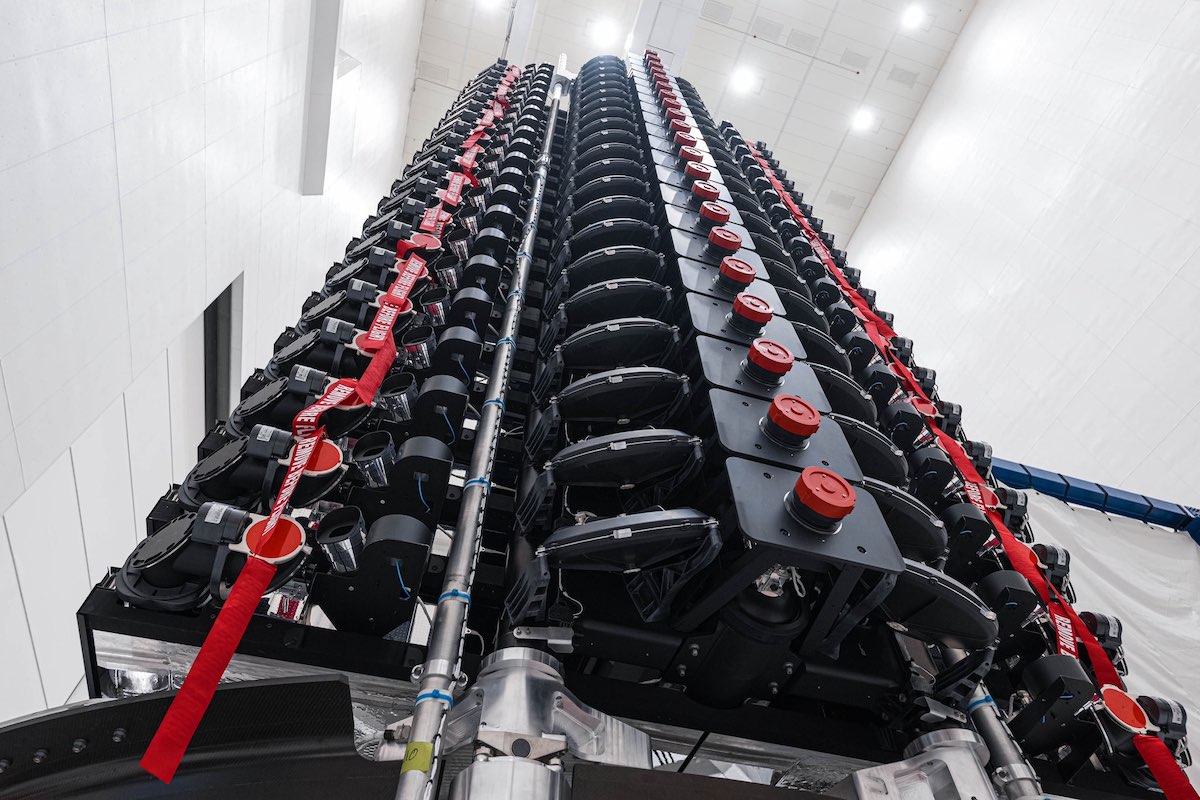Space News & Blog Articles
Live Coverage: Falcon 9 goes for launch pad record on Starlink launch
SpaceX is planning to launch 22 more second-generation Starlink satellites into orbit Sunday evening from Cape Canaveral Space Force Station at 9:50 p.m. EDT (0150 UTC) with the hope of breaking a launch pad turnaround record.
Sunday’s launch was pushed back from its original time of 9 p.m. EDT (0100 UTC) when the rocket went up right at pad 40 at around 5 p.m. EDT (2100 UTC), which is later than usual. SpaceX could still break the record for the shortest turnaround between launches from the same pad. If the Falcon 9 launches at the new time, it will be three days 20 hours and 50 minutes since the launch of Intelsat’s Galaxy 37 mission from pad 40. The previous record of 4 days 3 hours and 11 minutes was set less than two weeks ago between Starlink missions 6-6 and 6-7.
 A Falcon 9 stands poised for launch less than four days since the last rocket launched from the pad. Image: Spaceflight Now.
A Falcon 9 stands poised for launch less than four days since the last rocket launched from the pad. Image: Spaceflight Now.
A forecast from the 45 Weather Squadron issued on Saturday predicted a 30 percent change of acceptable conditions when the launch period opened at 8:22 p.m. EDT (0100 UTC), improving to 80 percent by the close of the period at 12:25 a.m. EDT (0425 UTC). SpaceX said it has three additional launch opportunities between 10:41 p.m. EDT (0241 UTC) and 12:22 a.m. EDT (0422 UTC).
After lifting off from Space Launch Complex 40, the Falcon 9 will head south-east, targeting an orbit inclined at 43 degrees to the equator. After separating from the second stage about two and a half minutes into flight, booster 1078 will arc downrange for a landing on the drone ship A Shortfall of Gravitas, which will be stationed in the Atlantic east of the Bahamas.
It will be the fourth flight for the first stage booster which launched the Crew-6, SES O3b mPOWER and the Starlink 4-4 missions. It’s last launch was 37 days ago.
Two burns of the second stage will be required to place the satellites into the required circular orbit. Separation of the 22 satellites is scheduled to occur about one hour, five minutes after launch.
 File photo of SpaceX’s Starlink V2 Mini satellites inside a payload processing facility at Cape Canaveral. Image: SpaceX
File photo of SpaceX’s Starlink V2 Mini satellites inside a payload processing facility at Cape Canaveral. Image: SpaceX
It will be the ninth launch of the so-called V2 mini satellites which are larger and have four times the bandwidth of the previous models. The full-sized V2 Starlink satellites are due to be launched by SpaceX’s fully-reusable Starship vehicle, but the delayed debut of Starship led SpaceX to create a condensed version of the satellites so they could be launched on Falcon 9.
According to statistics compiled by Jonathan McDowell, an astronomer and widely-respected expert on spaceflight activity, SpaceX has launched 4,881 Starlink satellites to date, and the number of Starlink satellites currently in orbit is 4,540.
In early May, SpaceX announced it had more than 1.5 million subscribers to Starlink. The company’s internet service is available in more than 60 countries.
When you subscribe to the SpaceZE News Feed, we will send you an e-mail when there are new updates on the site so you wouldn't miss them.

